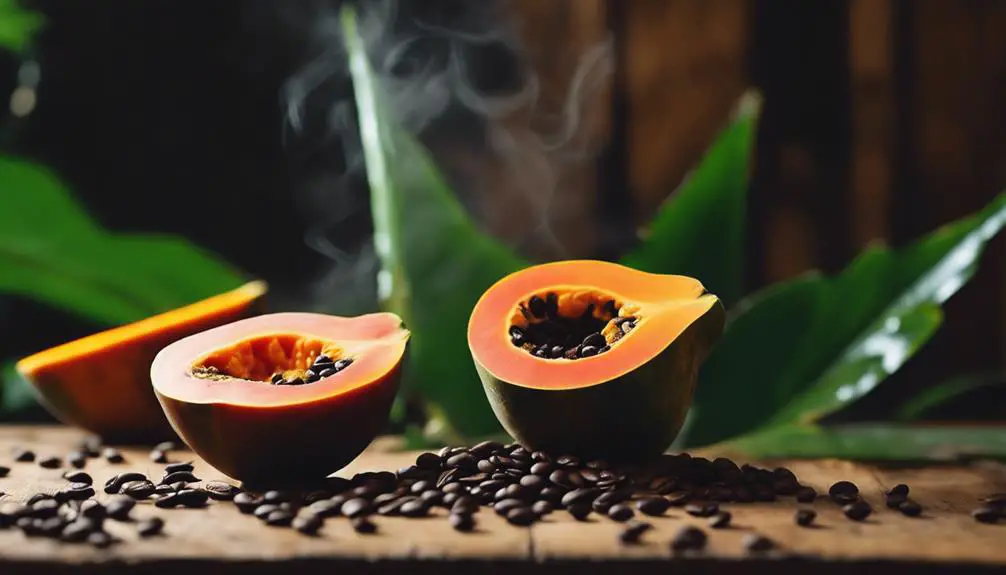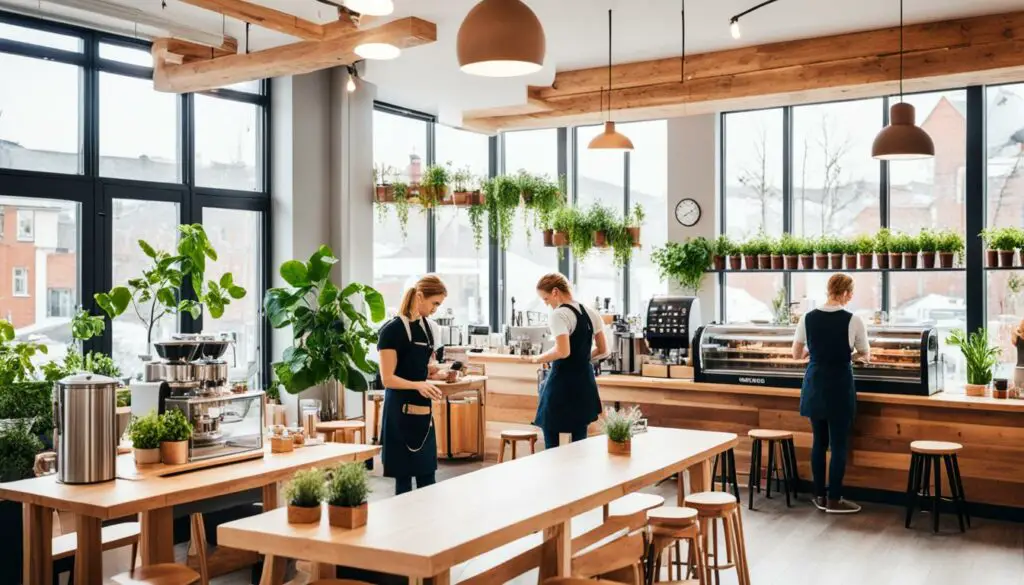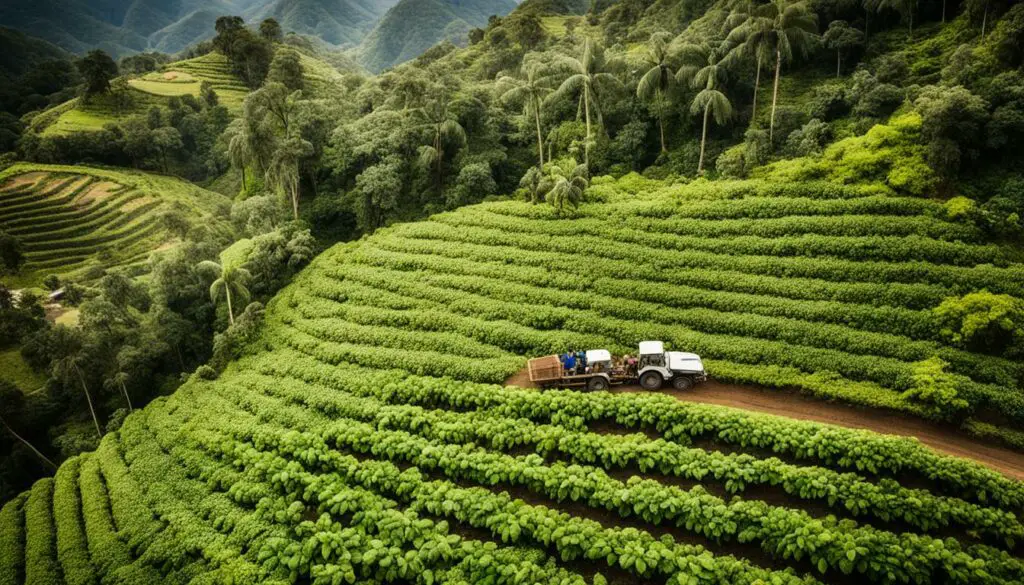Are you a coffee lover like the rest of us at Bushy Beard Coffee? Are you an experimental coffee brewer, who enjoys sampling different coffee brands and blends and trying out different brewing methods?
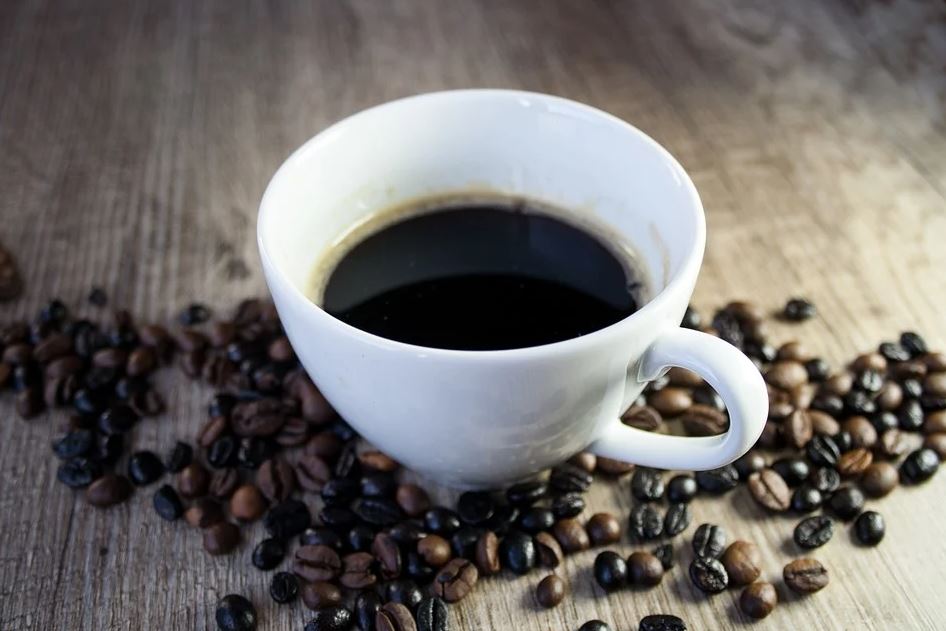
If you are lucky you will have found yourself an independent, artisan coffee house near you that offers a range of coffee bean blends and interesting brews to check out. If you are a die-hard coffee lover, you might even own a few coffee makers and coffee grinders so you can experiment at home.
While you may have tried using a french press coffee maker in the past, as these are more common, you may not have tried a pour-over coffee maker yet. Today we are asking the question, what’s best, the french press coffee maker or the pour-over coffee maker?
First, we will need to explore what french press and pour-over coffee makers are? How do they work, and what style of coffee do they produce? It will be up to you to decide which coffee maker, makes the best coffee for your personal taste and which coffee maker is the best fit for your lifestyle.
What is a pour-over coffee maker?
Pour-over coffee makers are popular among diehard coffee lovers. In this method, a coffee filter sits on top of a funnel that filters down to a coffee pot chamber. An example of a pour-over coffee maker is the Chemex coffee maker.
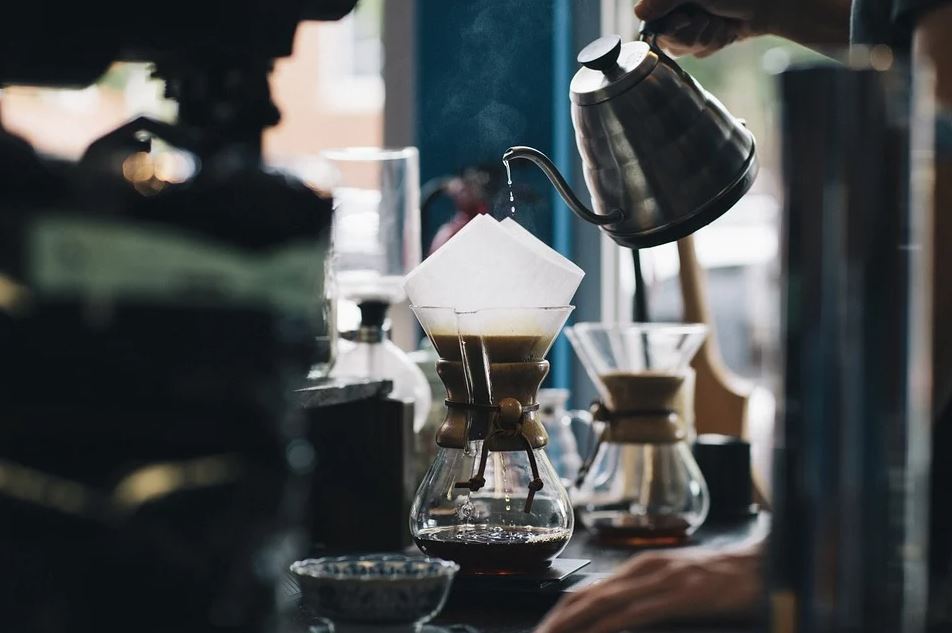
How to use a pour-over coffee maker
The first step is to grind the coffee beans. The coffee beans must be freshly ground using a coffee grinder into medium-sized coffee grounds before you can begin the brewing process. Check out our blogs on choosing the best coffee grinder, the best advice on coffee beans, and why coffee grind size is important for more information on this process.
The coffee grounds sit inside the coffee filter, and a small amount of hot water is poured over the coffee grounds. The water should only be about 93 degrees celsius. Leave the coffee grounds and water to sit for about 30 seconds to allow the coffee grounds to ‘bloom’. This will get you the best coffee possible as the essential oils and flavors are released from the beans. Pour over the rest of the hot water in a circular motion to cover all the coffee grounds. Leave the coffee to drip through the filter into the coffee pot below. This should take about 5 minutes. That is why it is known as pour-over coffee.
The pour-over method is great because it makes it difficult to over-extract the coffee beans, so your coffee should never taste bitter when you use this method. The pour-over coffee maker has many other names, such as filter coffee, or drip coffee. It’s a popular method of making a cup of hot coffee all around the world.
| Image | Title | Price | Prime | Buy |
|---|---|---|---|---|
Top | Mueller Electric Gooseneck Kettle with Pour Over Drip Coffee Maker Coffee Serving Set, Stainless Steel Coffee Servers Kettle & Tea Kettle, Matte | PrimeEligible | Buy Now | |
 | Chemex Pour-Over Glass Coffeemaker - Classic Series - 6-Cup - Exclusive Packaging | PrimeEligible | Buy Now | |
 | Pour Over Coffee Maker,1000ml/34oz Paperless Borosilicate Glass Carafe and Reusable Stainless Steel Permanent Filter,Glass Coffee Pot,Manual Coffee Dripper Brewer | PrimeEligible | Buy Now | |
 | Bodum 11571-109 Pour Over Coffee Maker with Permanent Filter, Glass, 34 Ounce, 1 Liter, Cork Band | PrimeEligible | Buy Now |
Product prices and availability are accurate as of the date/time indicated and are subject to change. Any price and availability information displayed on [relevant Amazon Site(s), as applicable] at the time of purchase will apply to the purchase of this product.
Prices pulled from the Amazon Product Advertising API on:What is a french press coffee maker?
The French press was invented in the 1930s by an Italian designer named Attillio Calimani.
The French press coffee maker features a press plunger that uses a stainless steel mesh filter to separate the brew from the coffee grounds. The coffee filter is connected to the lid. The lid sits on top of the coffee pot, which is long, cylindrical, and made of glass, and at the end of the brewing process, the mesh coffee filter is pressed down to the base of the coffee pot.
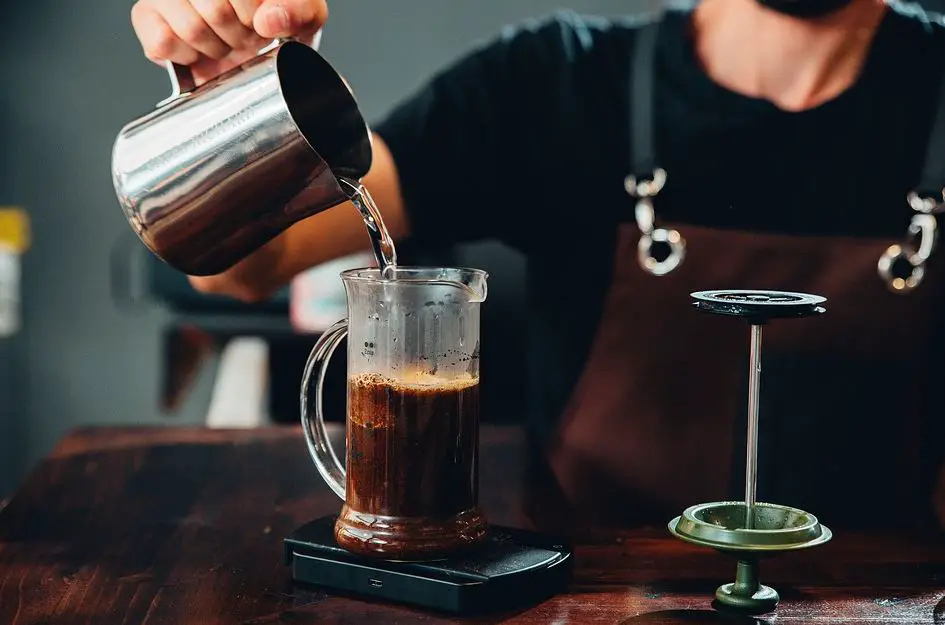
How to use a french press coffee maker
This is a simplistic and relatively quick coffee brewing method. Again, grinding the coffee beans is always the first step to making any professionally made coffee. You’ll want coarse coffee grounds for this method. Tip the coffee grounds into the French press coffee pot, and add a small amount of hot water to let the coffee grounds ‘bloom’ for 30 seconds.
The French press and pour-over coffee makers function similarly up until this point. Once you have added the rest of the water, stir gently, and place the lid on top of the coffee pot, but do not press down on the coffee filter plunger. Leave the mixture to steep for 5 minutes. When the brewing process is complete, push down on the plunger slowly until the mesh coffee filter has reached the bottom of the coffee pot and your coffee is ready to serve.
Be careful as it is easy to over-extract the coffee beans using this coffee brewing method. It might take a little experimenting to find the exact coffee ground size and brewing time to brew the best coffee for your personal taste. If you enjoy strong coffee you’ll enjoy using the french press, and coffee maker. Check out, how to brew strong coffee for some extra tips to get a rich, dark brew.
Now that you know what these coffee makers look like and how to use them, we can delve a little deeper into the differences between these machines and the kind of coffee flavors they produce.
Pour-over coffee maker vs french press – how do they differ?
Let’s take a look at some of the differences between the pour-over coffee maker and french press that can help you make a decision about which coffee brewing method will help you brew the best coffee for your personal taste and lifestyle.
Taste the difference
If you enjoy strong-tasting coffee, the French press might be the best option for you. This is because the coffee grounds and hot water mix together and steep, which brings out the coffee beans’ natural oils. The oils add to the flavor of the coffee, and the longer the brewing time, the stronger your coffee will taste, and the more caffeine it will have. Remember, be careful when you are using the French press coffee maker, not to over-extract the coffee beans, as this will give your coffee a bitter taste.
The pour-over coffee maker produces a much lighter coffee flavor and a softer, fruitier aroma. This is because the water is only in contact with the coffee grounds for the length of time it takes the liquid to drip through the coffee filter. The coffee filter itself, separates, not only the coffee grounds but also the coffee bean’s natural oils, so you get a much cleaner, thinner brew at the end of the process. If you prefer a softer-tasting coffee, this method will be better for you. It’s hard to over-extract the coffee beans using a pour-over coffee maker, so your coffee should never be bitter. But make sure you use a reasonable coffee ground size to ensure that the coffee beans aren’t under-extracted, giving your coffee a salty or sour taste. Start off with medium-sized coffee grounds and experiment with your coffee grinder to find the best coffee grind size for your brew.

Easy to use
Both of these methods are easy to use and a great way to start experimenting with coffee brewing if you’re new to the coffee club. They both follow a similar process in the beginning; grinding the coffee beans to the appropriate size, adding them to the coffee maker, boiling the water to 93 degrees celsius, and allowing the coffee grounds to bloom for 30 seconds, before finally pouring in the rest of the water. It is only at this point that the process differs. Both have similar brewing times and both coffee pots are easy enough to clean although it can be a bit annoying cleaning the coffee grounds out of the french press coffee pot.
Either way, it’s hard to mess up using these coffee makers because the coffee brewing process is so easy for both.
Brewing time
Brewing time is only an important factor if you find yourself brewing coffee in a rush. Perhaps you brew your morning cup of joe before you head out to work and you’re not much of an early riser.
Always in a rush? Well, the good news is that the brewing process for both the French press and the pour-over method doesn’t take very long, and you don’t need to be standing over the coffee maker every step of the way.
Once you have added all of your hot water, it will take the pour-over method about 3 minutes to drip down into the coffee pot and the french press method about 5 minutes to steep, but during that time you are able to make some toast or chow down on a bowl of cereal while the coffee is still brewing.
To speed things up in the morning and keep your coffee hot for longer, take your coffee with you to work in a cozy travel mug, or thermos so you don’t have to frantically sip your morning coffee before rushing out the door. The best part about making coffee at home and taking it with you in a thermos is that you can take your exceptional-tasting brew anywhere, it won’t go cold on you and you can forget about waiting in the queue at your local coffee house.
What you’ll need
When you use a french press there is very little else you need, apart from some decent coffee beans, a standard kettle, and a good burr coffee grinder. If you want to go pro, grab yourself a thermometer to check the temperature of your hot water, a scale to weigh out the best coffee bean to water ratio, and a timer to keep track of your brewing time.
However, when it comes to the pour-over coffee there are a few additional items you might want to consider investing in to get the most out of your coffee maker and brew the best coffee possible. Including what’s been mentioned above, you’ll also want to consider getting a gooseneck kettle to improve your pouring technique as well as the paper coffee filters which need to be replaced with every use. This makes the cleanup process easier than the french press method, but throwing away multiple paper coffee filters a day is not the most eco-friendly method of brewing coffee.
The most affordable
It’s always important to consider the cost of something before you buy it, no matter how big a budget you have to play with.
Both the pour-over coffee maker and the french press coffee maker are relatively cheap to buy, especially when compared to coffee machines like the espresso machine. But we always recommend getting a standard product always.
Check out some models here to see the price difference of coffee makers on Amazon.
Pour Over Coffee Makers– See on Amazon
French Press Coffee Maker– See on Amazon
Frequently Asked Questions (FAQs)
Is pour-over coffee better than french press?
It all comes down to what your personal taste is. If you’re a coffee lover who enjoys strong, dark coffee flavors, you’re better suited to the French press. If you like a clean, light, and fruity cup of coffee that’s not too strong, then you will prefer the pour-over method. The pour-over method is a favorite among coffee lovers.
Does french press coffee have more caffeine?
Espresso coffee contains more caffeine than any other type of coffee. The French press can be used to make espresso and, depending on your coffee bean to water ratio and the length of your brewing time, you can end up with a coffee cup full of caffeine. The French press will produce a more caffeine-concentrated cup of coffee than the pour-over method. Check out our blog: ‘What type of coffee has the most caffeine?‘ to find out more.
Can you use french press grounds twice?
Ew no. If you are desperate, you can give it a go but you’re going to get a really weak coffee with a bitter-tasting quality. Coffee grounds are not like tea leaves, and shouldn’t be re-used.
How long should I let my coffee steep in a french press?
Roughly 5 minutes. You don’t want to leave it longer than that unless you are experimenting with your coffee grounds to find the best coffee for your personal taste.
Can you use fine ground coffee in a French press?
You can, but the coffee won’t be as good. You will likely over-extract your coffee grounds, leaving your coffee with a bitter taste, so it’s better to use coarse coffee grounds in this coffee machine. If you do use a finer ground, do not use anything finer than a medium-fine ground, and you will need to shorten your brewing time so that the coffee grounds aren’t over-extracted. Remember, the mesh coffee filter on a French press is not as effective as the pour-over filter. The French press is designed for coarser coffee grounds, so you are likely to end up with coffee grounds in your coffee cup if your coffee grounds are too fine.
What coffee is best for the french press?
Your coffee beans should be ground to a coarse size. This is the best size for flavor extraction in the french press.
Final Verdict
With all this information now at your fingertips, it should be easy for you coffee lovers out there to decide which coffee brewing method you prefer. Think about the kind of coffee flavors you enjoy and which brewing process will fit into your daily lifestyle.
From all of us as Bushy Beard, we hope this blog will help you make the best coffee using the equipment and coffee maker you have at home, and if you’re looking to buy a coffee maker, hopefully, this blog will have helped you narrow down your choices and come to a decision. Let us know in the comments section which style of coffee you enjoy brewing the most.







